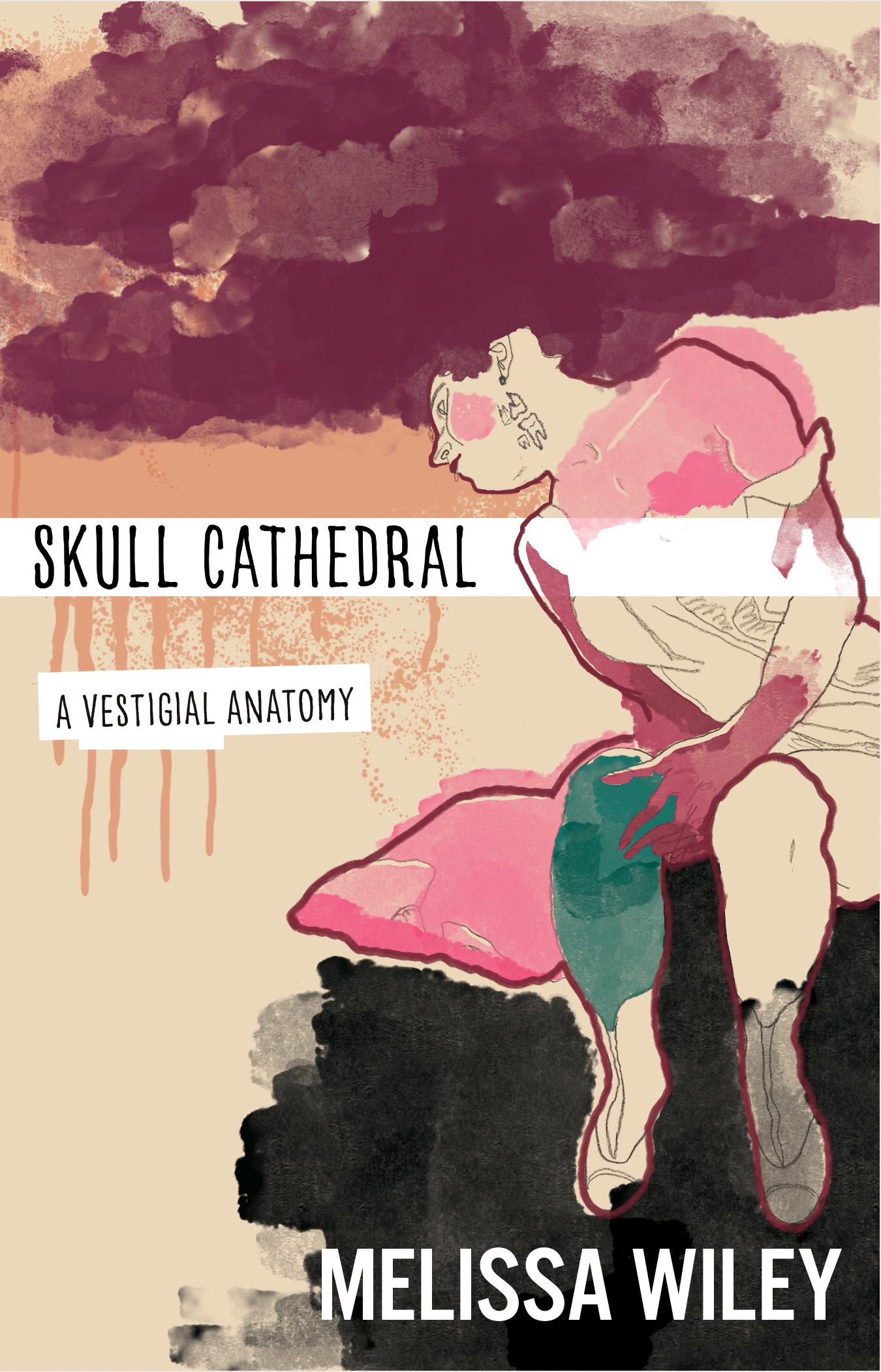Skull Cathedral: A Vestigial Anatomy
Skull Cathedral: A Vestigial Anatomy. By Melissa Wiley. University of Chicago Distribution Center, Illinois: Autumn House Books, 2020.
Paperback 232 pages. $17.95.
Winner of the 2019 Nonfiction Prize, selected by Paul Lisicky.
Only the second collection from prolific essayist Melissa Wiley, Skull Cathedral: A Vestigial Anatomy is an essay collection that defies easy categorization. It is categorized on the shelf as nonfiction, and yet portions of it deep-dive into surrealism and autofiction, blending memory with what-if and could-have-been scenarios that range from rosy wistfulness to darkly cerebral.
At times, it is an examination of the broader topics of gender and society, and yet each essay is a deeply personal exploration of taking up space: of having a body, and existing within it. It turns a mirror toward society and the reader, turning personal essays into an exercise in self-reflection for the audience as much as for Wiley. This collection is wrapped in the beautiful poetic language and extended metaphor that Wiley truly excels at producing, taking delicate threads of storytelling and weaving them together in truly unexpected, delightful combinations.
Each section in this collection is named for a vestigial portion of the human body, from wisdom teeth to male nipples to the hymen, and the theme of embodiment and the connection of the physical to the mental works through this theme especially well. Through the exploration of vestigial anatomy that Wiley offers, we explore the connections she has to the world: people, like her husband, grandmother, and her sister, concepts like gravity and personal growth, and even to the concepts she holds about people— Sandy Allen, for example, a famous actress and a record holder for the tallest woman in the world, who Wiley never met but felt a connection to. At times, these connections feel as vestigial as the section titles they’re collected under, but Wiley brings each to the forefront with delicate care, ensuring that each becomes important to the story.
The language in Skull Cathedral is exquisite. I often found myself rereading favorite lines, even whole passages to linger in the imagery, and to explore what connections of my own could be made to the winding metaphors presented within. Certain lines still stick with me, still draw me into moments of reflection on my own life:
“Teeth are precious regardless of the fact I kiss only with my lips, keeping my teeth hidden, regardless of the fact I have paid to have a dentist remove those with any wisdom. Then again, there is something to eating and being eaten.” (60) I have often thought about this quote, especially the last sentence, as I recover from my own wisdom tooth extraction in which I found no beauty and in which Wiley has found every glimmer. I know that I have taken away from this passage a greater appreciation for a moment of great pain, but every reader will draw something wonderfully unique from it.
“I still was married to the same man, still living in the same city. I had no real desire to change these things. Yet I felt newly free to inflict a certain daily carnage, and this has made all the difference.” (145) Having just moved across the country, leaving behind my hometown and an ex-wife, this passage will linger with me— the idea of my certain amount of daily carnage, a terrible but freeing quota to fill.
Throughout numerous well-crafted passages, Skull Cathedral seems to imply a very important, overarching point: that we become more fully realized when we accept ourselves, even the parts that are no longer useful— and that regardless of our physical bodies, we are all people with rich inner lives waiting to be realized: “Women who have had and not had their hymens broken may not all glimpse love from men in passing, but their hearts still beat like living lumps of jelly, a sign they are pupating—they are waiting— instead of doing what others might call a real living.” (28)
As I found deeply personal meaning in Wiley’s words, I know that any reader would find their own deeply personal, often uncomfortable moments of self-reflection. Those with an interest in surrealism, gender expression and body politics, or just an ear for a well-polished and thought-provoking essay are sure to find what they are looking for in Wiley’s Skull Cathedral: A Vestigial Anatomy.
-Ky Huddleston, Managing Editor

